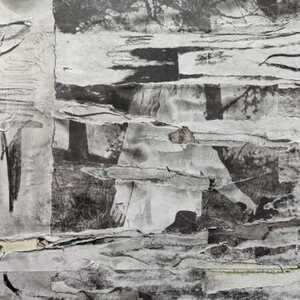Scanning and Tunneling
As part of my Nanotechnology course, I went to a demonstration of nano-scale microscopy at a lab here in school last night. Led by the very capable Dr. Z., it provided some background and demonstrations of Scanning Tunneling and Atomic Force microscopy (respectively STM and AFM).
Traditional optical microscopy goes down to the micron (meaning a millionth of a meter) level of resolution. If you want to be able to see things like atomic structures of materials, you have to go a thousand times smaller, to the nano (billionth) meter. A hydrogen atom is about a tenth of a nanometer in diameter, and larger molecules can be hundreds of nanometers.
However, it’s not possible to see things smaller than a micron with visible light, due to limitations in quantum physics and such. You can shorten the wavelength into the ultraviolet and get a bit more resolution. Theoretically, if you reduced the wavelength to the x-ray level, you could use photons to measure even finer scales, but there’s the practical problem of constructing an x-ray lens to focus your image.
So – we use electrons (in the case of STM) and a way of measuring nanoscopic deflections (for AFM) in order to get an idea of what things “look” like at that level. Dr. Z. spent about an hour going over the instruments’ history and operating principles. It’s interesting to think that this scientific tool is fairly new – 20 or so years old. Already the advances in the technology are evident, since the original dumpster-sized contraptions have shrunk into something about the size and shape of a sugar bowl on a cheese cutting board.
An STM gets an idea of what an atomic surface looks like by moving a needle that’s impossibly close to the surface and measuring minute fluctuations of current between the needle and the surface. A significant limitation is that whatever you’re scanning has to be electrically conductive. And flat. Like atomic-scale flat, or your needle’s going to ‘crash’ – actually make contact with the surface. Although the needle contains uncountable atoms, in theory (if prepared properly), it has a single atom at its tip.
Perhaps the coolest thing is that the instrument relies on a quantum effect – electron tunneling – for its measurements. The microscope itself, branded Nanosurf, looked like a squat golden cylinder resting on a square slab of granite. Apparently, a lot of the technology behind this is the result of some “Mars 2001 program,” obviously long-scrapped.
“STM”
You place your sample on a little magnetic cap that goes on a cylinder, place the cylinder into the notch cut out for it, then move it (using tweezers) to about a millimeter of the needle. That’s the end of the romance between your meaty human hands and this delicate apparatus. From this point forth, you control everything via software, computer and interface boxes.
We imaged some graphite. Getting a good picture in nanoscale microscopy is rife with intuition, prior experience and almighty quantum luck. In this case, individual atoms weren’t clear, but we could see a regular “step” pattern where the layers of graphite had been torn at an angle.
“AFM”
The AFM works by dragging a tiny bar with a needle on across the surface of your sample. A mirror on the other side of the bar provides a target for a laser. As the bar (aka cantilever) deflects, the laser’s reflection results in a magnification of movement that is measured.
Operation of the AFM is similar – get your needle within a millimeter, then let the computer take over. We imaged a semiconductor chip partially before the lab was over and it was time to go.
It’s interesting to think that we can build machines that work at these terrifically small scales, and that they are affordable enough for your average university to stick in a lab with a batch of students to operate. When you add in how much these tools have advanced in the last twenty years, then scale that to the difference between, say, early telescopes and today’s radio arrays, it’s a bit spooky. What are we going to see down there in another 20 years?












